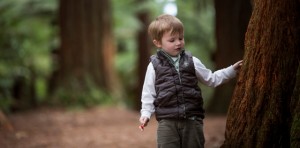Californian Redwood
Native to the north west coast of America, the botanical name ‘sequoia semperviren’ was given to the species by a German botanist to honour the half-caste Cherokee Chief Seqoyah, who developed an alphabet to enable his tribe’s dialect to be written. The common name Redwood comes from the tree’s heartwood
which is a light cherry colour and can darken to nut-brown when exposed to air.
It was the reputation of this timber, used widely for general building purposes that led to the planting of the Redwood Grove in Rotorua in 1901. The results of the planting were mixed – of the original 12 hectares, only six hectares survives today. This did not deter planters, and around 4000 hectares overall were planted throughout New Zealand in the 1920s and 1940s. Approximately one percent of those plantings remain.
The Redwoods are successful in this grove because they like sheltered sites in deep, fertile, well-drained soils with an even rainfall. They do not tolerate frosts and in harsh sites are very slow
growing and easily smothered by weeds. The bark can grow to 30 centimetres thick giving excellent
insulation and protection against insects and fire caused by lightening strikes, both common in their natural habitat. The bark acts as a cork-like layer protecting the inner trunk of the tree and allowing it to produce shoots through the dead outer layer several months after a fire.
The Redwood Memorial Grove surrounds the Gift Shop & Visitor Centre on Long Mile Road. Other Redwoods planted at a later date can be seen near the Green Lake and off Pohaturoa Road.


